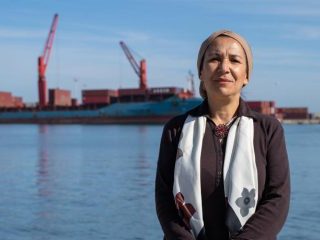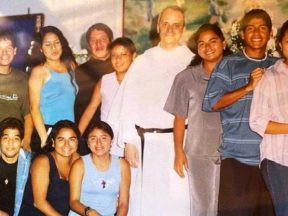Bangladesh. At The Roots Of Islamist Extremism.

“Here in Bangladesh the factors which drive Jihadist recruitment and mobilisation are multiple. The processes of Islamist radicalisation have historical roots which must be taken into consideration and which exceed the connection poverty-extremism”. Shahab Enam Khan, docent in international relations at Jahangimagar University in Dacca and a member of the Enterprise Institute, has completed an extensive study of radical Islamist movements. In a recent interview the scholar recalls that to understand the spread of jihadist-Salafism and the future challenges it is necessary to look at the past: to the period immediately following the country’s independence, obtained in 1971 after a bloody war to free itself from control by Pakistan.
The conditions for the affirmation of radicalisation of Islamist matrix, says Shahan Enam Khan, depend on the political polarisation created in the years following independence. When political movements and parties fought each other in the name of different principles and ideologies, while institutional incapacity to guarantee efficient governance became increasingly evident.
This led to a political vacuum plugged with new radical Islamist movements, whose recruitment strategies focussed precisely on criticism of the establishment, and the incapacity to guarantee services and rights for the majority of the population.
Corruption of the administrative and statuary machine together with that which invests the judiciary sector, supplied other elements for propaganda.
In more recent years, another factor has emerged: contradiction between the country’s economic growth, which benefits only an educated urban elite, and the non-inclusion of the majority of the population, especially in rural areas.
According to recent estimates by the Asian Development Bank, Bangladesh’s gross domestic product in 2017 grew by more than 7%, and forecasts for 2018 remain at the same level.
However growth is not inclusive and poverty remains widespread, according to reports issued by the Bangladesh Bureau of Statistics and the World Bank: about 30% of the population lives below the national poverty line, 17% (circa 25 million) suffer from extreme poverty; the unemployment rate is about 4%; every year of between 2 million and 700,000 more young people wanting to enter the world of work, only one fourth succeeds; the average monthly salary goes no higher than 5.500 Taka (60 euro), one third of the sum necessary for living in a decent manner.
Around these factors, groups pertaining to the local variegated radical galaxy have organised a rhetorical battle. This battle passes by various channels of distribution, ranging from pamphlets printed underground and distributed in rural areas and city peripheries, to word of mouth communication, ending up on social media, ever more accessible and inexpensive. Precisely along these channels of communication beginning with the institution of the so-called Islamic State in the Summer of 2014, there has been a grafting of global jihadist rhetoric, of the group led by the self-proclaimed Calif Abu Bakr al-Baghdadi and the earlier one of al-Qaeda. Both the present number one of al-Qaeda, Egyptian Ayman al-Zawahiri and his rival, al-Baghdadi, look with particular interest towards the Indian sub-continent, potentially an enormous recruitment area.
With its 172 million Muslims and intermittent but constant unrest between different religious communities, India is the morsel most sought after. Bangladesh, a nation with the fourth largest Muslim population in the world and a secular nationalist government led by Sheikh Hasina of the Awami League and unpopular with the Islamists, follows immediately. Not by chance, in September 2014 al-Zawahiri announced the creation of al-Qaeda on the Indian sub-continent (AQIS Asian quantum Information Science Conference).
Unlike the leader of the so called Islamic State, which only recently appeared in the area of South East Asia, here the al-Qaeda roots are solid, based on alliances, contacts, acquaintances consolidated during decades, since the 1990s, and Afghan Mujahedin resistance to Soviet occupation. That jihad involved about 3,400 Bangladeshi. Some of them formed in 1992 the group Harkat-ul-Jihad-al-Islami Bangladesh (local branch of the Pakistani group of the same name), which in 2005 inaugurated an ambitious agenda of power taking in ten years, supressed by members of the security.
From the end of the 1990’s to the beginning of the following decade, professor Shahab Enam Khan told Fides, the scene was dominated by two more groups : Jamaitul Mujahedin Bangladesh and Jagrata Muslim Janata Bangladesh, responsible in the Summer of 2005 for 500 explosions in different parts of the country. Groups with a network of militants active in rural areas and metropolitan peripheries, composed mainly of young men without schooling, poor, marginalised, excluded from the job market, lacking opportunities for social improvement, filled with resentment.
However, widespread poverty and lack of schooling alone cannot explain the spread of Islamist fundamentalism. Here in Bangladesh, as elsewhere, in jihadist mobilisation other factors come into play, as sociologist Diego Gambetta explains in his book Engineers of Jihad: the Curious Connection Between Violent Extremism and Education. And as demonstrated in biographies of certain Bangladeshi jihadists. The leader Jagrata Muslim Janata Bangladesh, Bangla Bahi (also known as Siddiqul Islam and Aziz Ur-Rahman, executed in 2007), who had a degree in Bengali literature. Four of the five jihadists responsible for the attack in July 2016 at Holey Artisan Bakery in Dacca for which the so-called Islamic State claimed responsibility, came from well-off, privileged families, had solid studies behind them, and guarantees for the future.
Behind the affirmation of Islamist radicalisation there lies another battle of even greater importance, social and ideological. It concerns the definition of Bangladeshi identity, the role of Islam– and what form of Islam – within a social and cultural transition which in the 21st led century a country split between a majority anchored to the cultural and social coordinates of the rural world and a minority in power and is influenced by alternative exogenous models. Jihadist groups are also response to this transfer.
They exploit the new social and identity fractures. Fractures which are part of the deeper rift that has countermarked Bangladesh since its establishment: the rift between those who have in mind a nation which is secular and liberal , as stated in the country’s first Constitution 1973, and those instead who aspire to a nation founded on Islam as the state religion, as stated in the 1988 constitutional amendment. More than in poverty, it is in this cultural land-sliding – badly managed and often stoked by institutional politics– that the matrices of Islamist radicalism must be tracked down.
Julian Battiston



